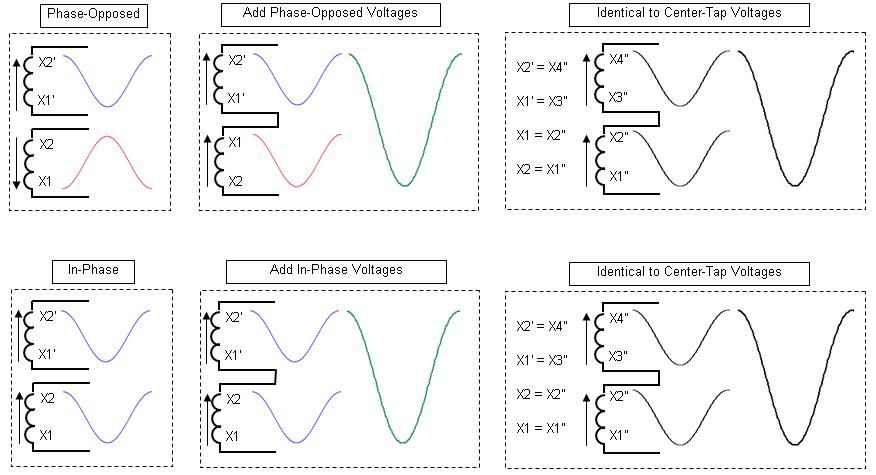Hameedulla-Ekhlas
Senior Member
- Location
- AFG
for dot symbole and polartiy.
please the attached file.
The two black dots on the left-hand transformer indicate that at a certain time the current is coming "upward" out of both side. Since alternating current goes both "Up" and also "Down" a fraction of a second later it is pointless to say "+" or "-" and instead we describe the left hand transformer as "being in phase". In the right-hand transformer, the two coils are wound differently from each other so at any time when "positively" current is going "up" in the priamry coil, it is going "down" in the secondary. We describle this as "being 180 degree out of phase"
The black dots are only shown in those cases where this is an important item
please the attached file.
The two black dots on the left-hand transformer indicate that at a certain time the current is coming "upward" out of both side. Since alternating current goes both "Up" and also "Down" a fraction of a second later it is pointless to say "+" or "-" and instead we describe the left hand transformer as "being in phase". In the right-hand transformer, the two coils are wound differently from each other so at any time when "positively" current is going "up" in the priamry coil, it is going "down" in the secondary. We describle this as "being 180 degree out of phase"
The black dots are only shown in those cases where this is an important item

